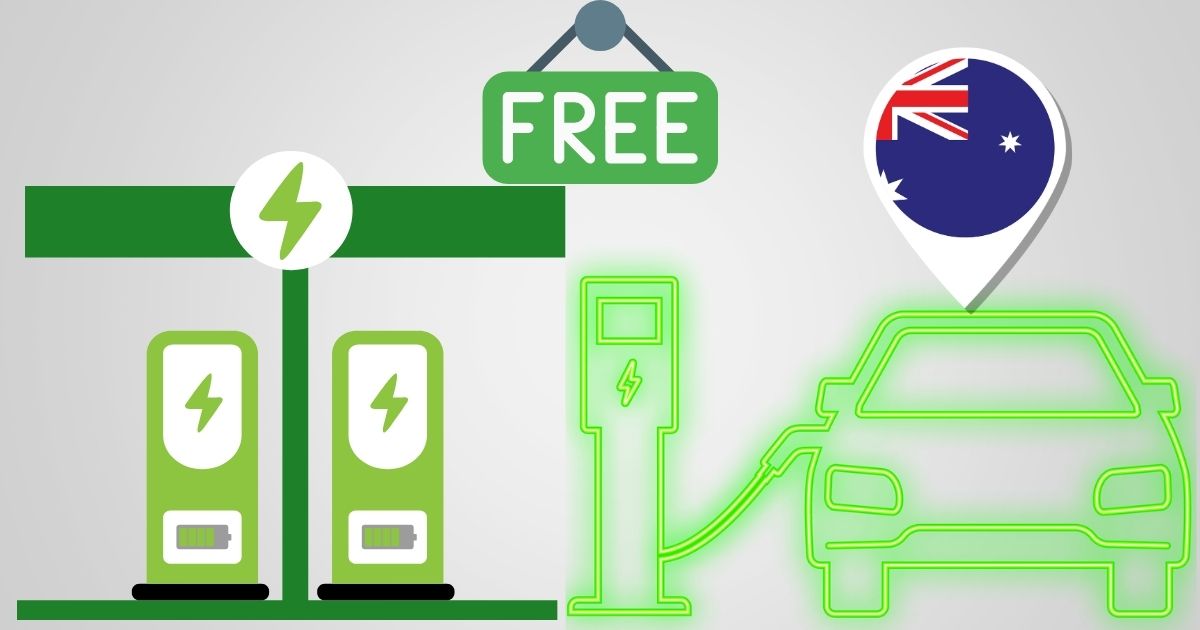Which State Has Free Charging Stations In Australia?
Australia is becoming a more ecologically concerned nation, from the government to automakers to consumers, and electric cars are starting to gain popularity there.
An essential feature of electric vehicles is the accessibility of a charging station network.
Australians are moving more and more towards electric cars. The need for public EV charging stations will rise as a result.
The purpose of this article is to examine free charging stations in Australia and also highlight the charging infrastructure against the presence of electric cars in Australia.
Are Electric Car Charging Stations Free In Australia?
Australia has both free and paid charging stations. In Australia, there are certain places where electric car charging is free.
If you want to buy an electric car, depending on free EV charging stations isn’t a long-term viable option. There are more free charging stations than one may think.
There are a lot of individuals in the charging station waiting line.
In Australia, the providers of charging stations offer a temporary service. It is an advertisement for electric cars.
- The National Roads and Motorists Association (NRMA): NRMA presently provides free charging throughout the country for both members and non-members; but, in the future, non-members may be required to pay.
- Chargefox: While some charging stations are constantly free, some have a fee. On paid stations, NRMA members are eligible for a discount.
- JOLT: The company provides free charging up to a daily maximum of 7 kWh. Over this cap, additional charges are subject to a cost. also works with Endeavour Energy to offer free EV charging in Sydney; stations are situated next to substations on the street.
- The partnership between Pepper Money and Evie Networks: This company provides a complimentary 12-month subscription with up to 2,000 kWh of charging. Only drivers who have settled an EV loan they previously had with Pepper Money are eligible for this special offer.

Which State Has Free Charging Stations In Australia?
With 715 public EV charging stations (37 above 100kW, 112 between 24 and 99kW, and 566 below 24kW), New South Wales leads the state in the number of chargers. Australia has 356 free charging stations, the majority of which are located in New South Wales.
- New South Wales (NSW)
With the highest concentration of charging stations, NSW is in the lead. Some suppliers offer free charging as a promotional tactic; however, many stations charge for use. For example, free charging is currently offered at all of the National Roads and Motorists Association’s (NRMA) stations nationwide. Non-members should be informed, though, that there might be fees in the future. - Queensland
There are now more EV charging stations in Queensland, some of which are free. Major cities and well-travelled roads are the main locations of these stations. Look for chances to be charged for free when visiting the Sunshine State. - Victoria
Victoria also offers a decent number of charging stations, with both paid and free options. Keep an eye out for local initiatives and collaborations that provide free charging to encourage EV adoption. - Australian Capital Territory (ACT)
Canberra is located in the ACT, which has an expanding network of charging stations. While the majority of stations demand payment, as a value-added service, some companies and associations might provide free charging. - Southern Australia
There is a restricted quantity of free charging stations in South Australia. But programmes like JOLT work with neighbourhood energy companies to provide free EV charging in particular locations. Keep in mind that free charging frequently has restrictions, including daily usage constraints. - Western Australia
In terms of infrastructure for charging, Western Australia is catching up. The state will receive $22.6 million from the government to build new charging stations. As the network grows, keep an eye out for both free and paid options. - Tasmania and the Northern Territory
Even though there are often fewer charging stations in Tasmania and the Northern Territory, EV aficionados can still discover alternatives that are free. There will probably be additional charging stations in these areas as EV use increases.
Tesla Charging Stations In Australia
Superchargers
Tesla’s Supercharger network is the largest global fast-charging network, with over 50,000 Superchargers worldwide.
Tesla’s Supercharger network is a game-changer for long-distance travel. These stations are strategically located along major routes near convenient amenities.
Destination Charging
Additionally, Tesla provides destination charging in a number of Australian places.
There are currently 33 Supercharger stations and over 700 Destination Chargers operated by Tesla.
These chargers are frequently located at hotels, restaurants, shopping malls, and other establishments.
The Castle Towers Red Car Park (B1 Row 7) in New South Wales, 4 Hearts Brewing (88 Limestone St) in Queensland, and 535 Little Lonsdale Street Flagstaff Car Park in Victoria are a few of the destinations that Tesla offers.
How Many Electric Car Charging Stations Are There In Australia?
Currently, there are little over 3,000 EV public charging stations spread throughout 7.692 million square kilometres in Australia (2531 standard AC and 470 supercharged DC), 357 of which are fast public charging stations.
There are several ways to charge a battery, including standard wall outlets that can take up to 40 hours to fully charge a 100-kWh battery.
These outlets provide about 2.4 kW of power, which is adequate for domestic use. Installing specialised wall box units in driveways or garages speeds up charging to seven to ten hours.
Public areas frequently include AC charging stations with a capacity of 7 kW to 22 kW.
However, there are DC fast charging alternatives like Tesla Superchargers, which have charging rates ranging from 25 kW to 150 kW and can charge an automobile from zero to 80% battery in under an hour.
